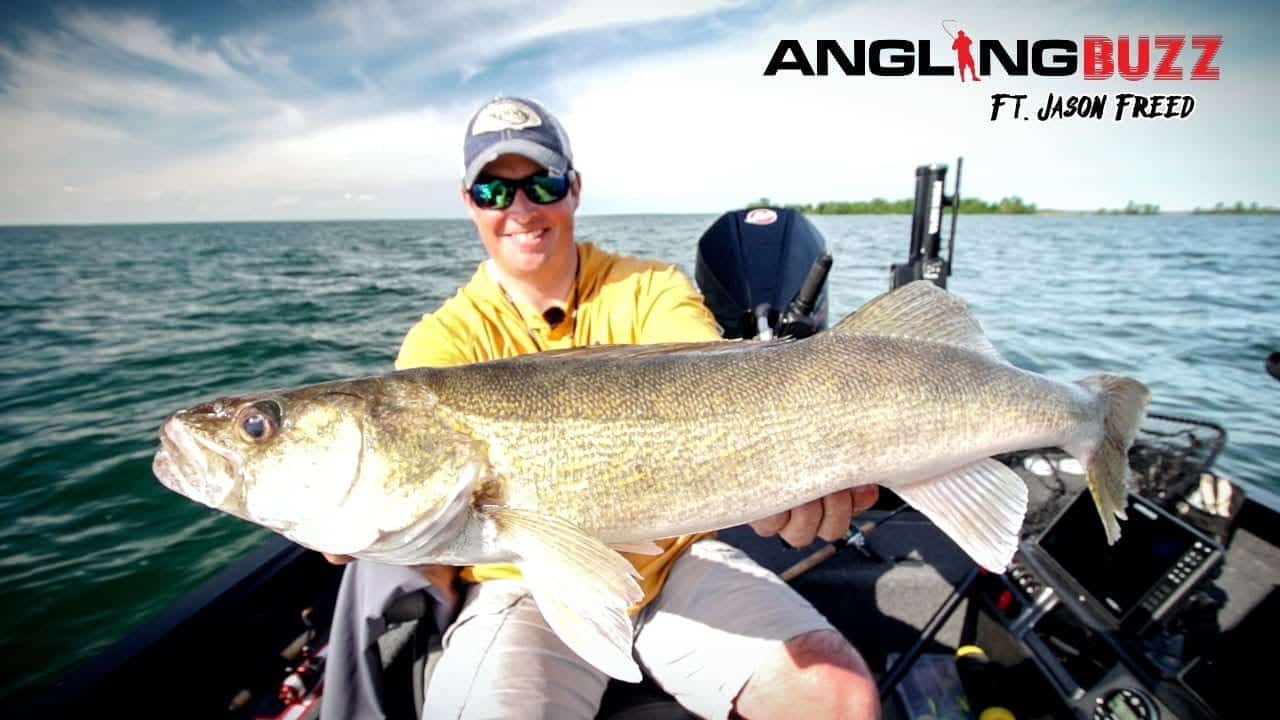On today’s episode of AnglingBuzz TV, we’re talking all about finding walleye and how to catch them! Our special guest is Jason Freed who’s a fishing guide on Minnesota’s famous Leech Lake.
Nick: Obviously Leech Lake is extremely well known for it’s excellent walleye fishing, but the lake itself has a lot of diverse habitat and forage and is really great for a lot of different species of fish.
Jason: That’s true. Throughout the summer months, our guide service guides for everything from walleyes, bass, muskies and even sometimes even panfish. Leech Lake is a truly fascinating fishery. It provides so many different opportunities and types of structure, from sand flats to deep and shallow water structures, break lines throughout the whole lake, various types of shallow bays and deeper bays.
Right now, the best walleye fishing for me has been in 12 feet or less, and that’s pretty common on Leech Lake, especially early in the year to focus on those shallow depth range – even through the summer months.
Nick: That’s actually one of my favorite ways to catch walleyes, up shallow, fishing aggressively. If you had to ID one primary factor to finding fish on a big lake like this, what would it be?
Jason: That’s one simple word: “wind”. Wind is everything when it comes to Leech Lake. Wind is what drives baitfish and will often times congregate them in different parts of the lake. Where those baitfish congregate, you’re going to find active schools of walleye feeding. Wind can take what is a massive lake and downsize it to a lake that is really fishable. It also helps fishermen find those congregated walleyes. On the days when you don’t have wind, with the clear water, it can make finding walleye and making them bite somewhat difficult. That’s where you need to adapt as a fisherman.
Nick: There’s a lot of forage on Leech Lake, whether it be shiner minnows, perch, crayfish, bugs, you name it. There’s no shortage of food for them to eat on Leech Lake. That being said, what are a few of your favorite tactics for finding walleye and catching them out there?
Jason: The number one presentation I’m going to start with, especially in the beginning of the year and even into the summer, is the good old jig and minnow. And the number one bait of choice is going to be a spot tail shiner. When you’re using those jigs, you’ll want to use anywhere from a 1/16oz all the way up to a 1/4oz depending on the depth and the wind. When we’re using those jigs, we’re trying to focus on those sand-to-rock transition areas. We’ll either be pitching them or drifting and snapping those jigs along. It’s really a great presentation to catch Leech Lake walleyes.
The second presentation of choice is a jig and a plastic. As we move further into the summer months, we’ll focus on using things like 3 to 4 inch paddle tails. As we fan cast these paddle tail swimbaits, we’re trying to keep that bait just above bottom, ticking things as we go. We’ll also rip them through the cabbage, trying to find those active Leech Lake walleyes. It’s a great presentation to find aggressive and reaction style bites on Leech Lake, and we use it all throughout the lake. Sand to weed transitions, cabbage beds, as well as shallow gravel and rock bars.
The third and probably most aggressive presentation is casting Jigging Raps throughout the lake. We like to focus on those large, expansive sand flats or gravel bars in anywhere from four to twelve feet of water. For many anglers, a Jigging Rap is kind of seen as a deepwater structure bait, but we like to use it as a search style bait where we can make these casts. What we think these Jigging Raps are doing is mimicking the thousands of crayfish that inhabit Leech Lake, and as they are landing in the sand, that’s what’s provoking the walleyes into being because they think they are crayfish coming in and out of the sand. It is a great presentation to find walleye and cover a lot of area on Leech Lake.
Nick: A lot of this stuff you’re sharing is not only applicable on Leech, but also on a number of different walleye fisheries all across the Upper Midwest.










